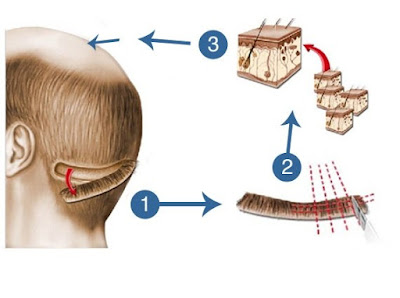Do you know what makes a hair transplant successful?
It is not just the maximum hair growth but the results should look very natural too. No cosmetic surgery would be a success without a natural and aesthetic look. For hair transplant, hairline designing is the component that fulfils the natural looking outcomes.
Hair transplant is a sophisticated cosmetic surgery involving transfer of the hair follicles from the donor area to the bald area. The procedure is a combination of medicine with art which demands expert hands to perform it skillfully. Super specialized plastic surgeons undergo training of 3 years to pursue plastic surgeries and learn the precision these surgeries demand. Therefore, the hair transplant can be best performed by a plastic surgeon who is gifted with artistic sensibility.
Indians are quite popular for their talent of sculpting and few of the plastic surgeons in the country are truly gifted with such talent. One such surgeon for hair transplant in India is Dr Suneet Soni who is popularly known as “masters of artistic skills” by thousands of patients underwent his knife for hair transplant. Besides the excellent running industry, the hair transplant cost in India is way too affordable which is the motivation for people from all across the globe to visit our nation for hair transplant tourism.
Dr Suneet Soni is extraordinary in his crafty skills and astute in his decision making that makes his a unique surgeon. So if you are seeking a perfect hair transplant then you are at the right place.
Hairline designing
Most of the patients come worrying about the surgical outcomes and ask us that whether the hairline would look natural or not. We have “Yes” as an answer for them.
Ideally, natural looking hairline completely depends on the skills of the surgeon. The in depth knowledge of hairline designing and artistry in handwork encompasses a natural looking hair transplant. While designing hairline there are certain components that contributes to the natural looks which include:
1. Age of the candidate: The hairline is specifically different at different age and the surgeon design the hairline as per the age.
2. Sex of the candidate: Females and males have different hairline pattern and the surgeon consider this element for the hairline designing. In females, usually temporal triangles are not built as in males.
3. Face trait and width of the forehead: The facial profile decides the hairline designing.
4. Availability of the donor hair density: The donor area should provide the adequate hair follicles in order to design the hairline with natural looks.
5. Personal preference of the patients: The patient is asked about their preference while designing hairline.
6. Inherited pattern: The surgeon should consider the inherited hairline in order to replicate the natural looks.
Hair transplant techniques
There are 2 primary methods to perform the hair transplant that include FUT hair transplant and FUE hair transplant.
Strip technique or FUT hair transplant: In FUT hair transplant, a strip of around 1.5 to 2 cms is removed from the back and sides of the head which is then divided further under the high magnification to harvest individual hair follicles by a team of expert technicians. The donor area is sutured back with a contemporary method termed trichophytic closure allowing healing to take place with almost invisible scarring. The hair grafts are then transplanted at the desired bald area.
FUE hair transplant: In FUE hair transplant, the hair follicles are extracted one by one from the donor area by pulling them individually using a punch like device. The extracted hair follicles are transplanted at the desired bald area. This technique is suitable to extract around 2000 – 2500 hair follicles making it a suitable method to perform hair transplant in early hair loss cases or facial hair transplant.
How can FUT technique bring back the natural looking hair?
FUT hair transplant technique allows the surgeon to harvest around 3000 – 3500 hair follicles from the donor area which is a suitable technique for treating the extensive hair loss. But an added advantage of this technique is that it allows the harvesting of variety of hair grafts including single thin hair graft and multiple think hair grafts which give option to the surgeon for selecting the hair grafts appropriately to design the hairline in a natural way or achieve the fuller look.
There are ways by which a surgeon could produce natural looking hair transplant that include:
1. Preferring the single hair graft in the front line: The knowledge of hairline designing is a must when a surgeon pursue hair transplant along with the artistic sensibility. The surgeon selects the hair grafts judiciously to fulfil the aesthetic demands of the procedure. Each hair graft could have one to four hair follicles as a unit where in the single ones are preferred in the front line or the temporal triangles to achieve the natural look. On the contrary, the multiple thick hair grafts are preferred to be transplanted in the rear rows which provide the fuller look.
2. Proper angle and alignment of the hair grafts: Each hair naturally are embedded at a certain angulation and pattern which is usually random. Similar pattern is followed in hairline designing wherein the angulation and irregularly irregular zigzag pattern of hair follicles are maintained. In the front area, sparse hair growth is needed but in the rear rows dense hair growth looks natural and similar hair density is replicated by the surgeon after hair transplant.
3. Selection of sufficient and strong hair graft: It is important for a surgeon to maintain the donor area’s hair density while harvesting and not over harvest the area. The selection of strong and healthy hair follicles is a must in order to achieve the permanent and natural looking hair growth.
